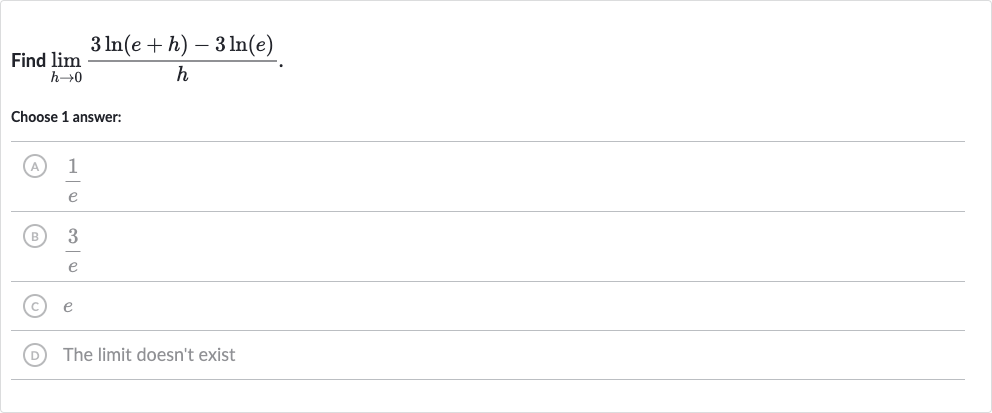Full solution
Q. Find .Choose answer:(A) (B) (c) (D) The limit doesn't exist
- Recognize base and function: Recognize that the limit involves the natural logarithm function and the constant , which is the base of the natural logarithm.
- Rewrite using logarithm properties: Rewrite the expression inside the limit using the properties of logarithms: .
- Apply property to expression: Apply the property to the expression: .
- Simplify expression inside ln: Simplify the expression inside the ln function: .
- Apply L'Hôpital's Rule: Now the expression is .
- Derivative of numerator: Recognize that this is a standard limit form that can be solved using L'Hôpital's Rule, since it's in the indeterminate form as approaches .
- Derivative of denominator: Apply L'Hôpital's Rule by taking the derivative of the numerator and the derivative of the denominator with respect to .
- Simplify using derivatives: The derivative of the numerator with respect to is by the chain rule.
- Take limit as approaches : The derivative of the denominator with respect to is .
- Take limit as approaches : The derivative of the denominator with respect to is .Now the limit is , which simplifies to .
- Take limit as approaches : The derivative of the denominator with respect to is .Now the limit is , which simplifies to .Take the limit as approaches , the expression becomes .

